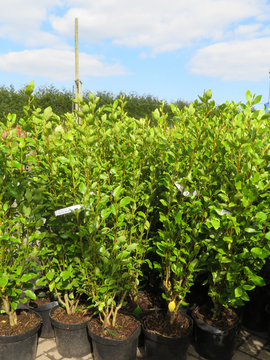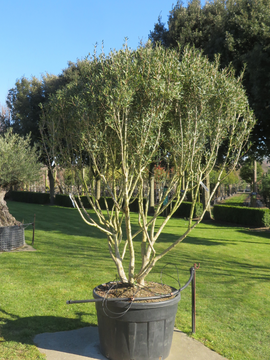
Adored by bees, garden designers, clients, landscapers and just about everyone really the good old Lavandula has everything you want in a plant.
One of the finest plants you can plant - scented foliage, oodles of flowers and attractive to bees and wildlife. Lavandula derives from the Latin lavare – to wash.
Versatile and useful for hedging, planting in mixed borders, containers Lavandula are densely covered in flower spikes in the summer.
The evergreen narrow grey - green foliage is topped by spires of purple - blue flowers with the odd pink or white exception to the rule! Flowering for most of the summer filling the air with scent and attracted wildlife.
Whether planted as a flowering hedge along a sunny path, in groups of 3 or 5 or as a stand alone plant in the ground or in containers Lavandula remain one of the most popular plants around.
Happy in a sunny site in a well drained soil that does not get waterlogged over winter.
- Lavandula angustifolia. Old English Lavender. Good for hedging. Height 80cm. Spread 80cm
- Lavandula angustifolia ‘Hidcote’. English Lavender. Height 40cm. Spread 45cm
- Lavandula angustifolia ‘Dwarf Blue’. Dwarf English Lavender. Dwarf compact habit. Height 30cm. Spread 30cm
- Lavandula angustifolia ‘Munstead’. Dwarf English Lavender. Height 40cm. Spread 60cm
- Lavandula stoechas. French Lavender. Dark purple tuft-like flowers on the end of the stems. Height 80cm
- Lavandula x intermedia ‘Eidelweiss’. Dutch Lavender. White flowers with green foliage. Height 50cm. Spread 45cm
- Lavandula x intermedia ‘Eidelweiss’. Dutch Lavender. White flowers with green foliage. Height 50cm. Spread 45cm
|
Hidcote |
Dwarf Blue |
Munstead |

.jpg)
.jpg)
.jpg)



